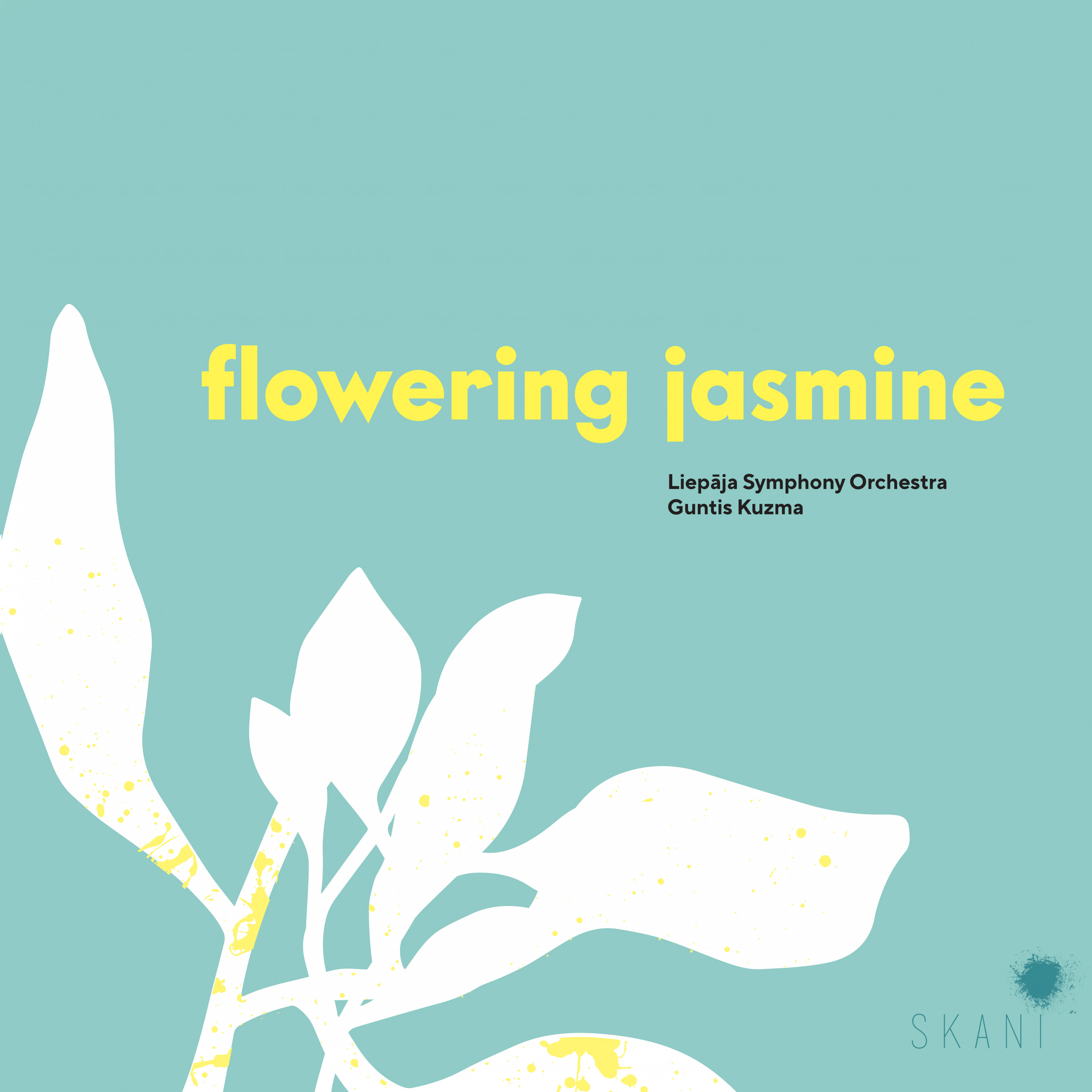Throughout the years, many superlatives have been used to describe nature and the natural objects in Latvia. Latvian nature has inspired artists and art of all kinds – paintings, stories, poems, and also many pieces of music.
Recognizing this, the Liepāja Symphony Orchestra, conducted by Guntis Kuzma, selected several symphonic works that were, directly or indirectly, inspired by Latvian nature. The works selected are from throughout the history of Latvian symphonic music (nearly a century and a half) and were released in 2022 on the album Flowering Jasmine (or Plaukstošais jasmīns).
The collection spotlights both well-known names and works by composers that are heard less often these days, presenting a variety of styles, displaying some of the trends and evolution of Latvian symphonic music over the last century. Most of the works included here, regardless of when they were written, could be characterized as being in a romantic (or romantic inspired) style – even though some of the works were written a century apart, the collection flows almost naturally – no jarring or harsh selections here.
Ādolfs Skulte’s celebratory ‘Uvertīra’ (or ‘Overture’) opens this collection. Full of sweeping orchestra flourishes and almost playful melodies, the work exhibits Skulte’s mastery of the symphonic form (he has nine symphonies, among many other symphonic works, to his credit).
No Latvian symphonic music compilation would be complete without a selection from perhaps Latvia’s greatest symphonist – Jānis Ivanovs. On Flowering Jasmine, that is ‘Varavīksne’ (Rainbow). Ivanovs often was inspired by nature (particularly the nature of the Latgale region), and often looked for the relationships between colors and sounds, which is displayed brightly in this work.
Alfrēds Kalniņš’ ‘Pie Staburaga’ is a tribute to the limestone cliff on the Daugava River. Written before the sinking of the cliff (in 1966, when building the Pļaviņas hydroelectric plant, that section of the river was flooded, leaving Staburags underwater), the reverent work paints a dramatic picture of the cliff, which was not just a major natural Latvian monument, but a place steeped in mysticism and folklore.
The works of Georgs Pelēcis have become popular throughout the world, perhaps due to the composer’s deceptively simple style, skill with melody, and, most of all, the pure beauty of his music. The work ‘Plaukstošais jasmīns’ with its tender, almost fragile string melodies, is enhanced by the haunting melody of the vibraphone, played here by Marta Kauliņa.
The collection also includes works by Jānis Porietis (the melancholic, affecting ‘Rīts’), Jānis Ķepītis (the reserved, gently flowing ‘Liriskā balāde’), Ādolfs Ābele (‘Meditācija’ – full of introspection and richly emotional), Agris Engelmanis (‘Zīmējums sēpijas tonī’ – pulsating and in a state of near constant motion), and Ēriks Ešenvalds (‘Noktirne’ – mysterious and intriguing, and inspired, like many of his works, by the poet Sara Teasdale, featuring the orchestra whispering lines from her poem ‘Twilight’).
The CD booklet offers not just details on the compositions, but also offers interesting, even humorous anecdotes and details about the composers themselves. For example, Ādolfs Skulte was an adept repairman, and was able to fix the gearbox on his Volga car himself, Jānis Ķepītis was also a skilled beekeeper, and that Ādolfs Ābele never used an ashtray when he smoked (which regularly resulted in ash on both his shirts and his piano).
Revealing not just the richness of Latvian nature, but also the richness of Latvian symphonic music, the collection of nine symphonic poems and miniatures found on Flowering Jasmine presents works from more than a century of Latvian music. Vividly performed by the Liepāja Symphony Orchestra and conductor Guntis Kuzma, this collection offers both a broad, engaging panorama of music and an enveloping, absorbing journey through the nature of Latvia.
Egils Kaljo
www.latviansonline.com 11/05/2023
_____________________________________
Here’s a century’s worth of Latvian orchestral music, from Ābele to Skulte, and 1906 to 2007. Listen blind and you’ll have a hard job placing some of these nine pieces chronologically. Conductor Guntis Kuzma explains in his foreword that “our music contains fewer modernist elements…” and the 1987 Overture by Ādolfs Skulte could have been written four decades earlier. It’s appealing, colourful stuff, though, and reading that the composer “was able to repair any household appliance” makes you like him even more. The biographical sleeve notes are as entertaining as the music. Jānis Kepītis, whose Lyrical Ballad dates, improbably, from 1984, excelled at crosswords and beekeeping. Ādolfs Ābele “seemed to glide rather than walk,” leaving behind a trail of ash and cigarette smoke. His 1924 Meditation (In Solitude) is a gem, a ripe, bittersweet eruption of colour.
Jānis Ivanovs, several of whose 21 symphonies have been released on the Skani label, is a significant figure in 20th century music. Rainbows, from 1939, is a lushly orchestrated tone poem reflecting the composer’s chromesthesia. Agriscience Engelmanis, a one-time pilot who could have been a Soviet cosmonaut, contributes an evocative, occasionally pungent Illustration in Sepia. There’s so much to love here, Kuzma drawing refined playing from an audibly enthused Liepāja Symphony Orchestra. Skani’s sound is warm and rich, and the aforementioned booklet notes include links to further information contained on the Latvian Music Information Centre’s website. Nice sleeve art too.
www.theartsdesk.com 30/07/2022

